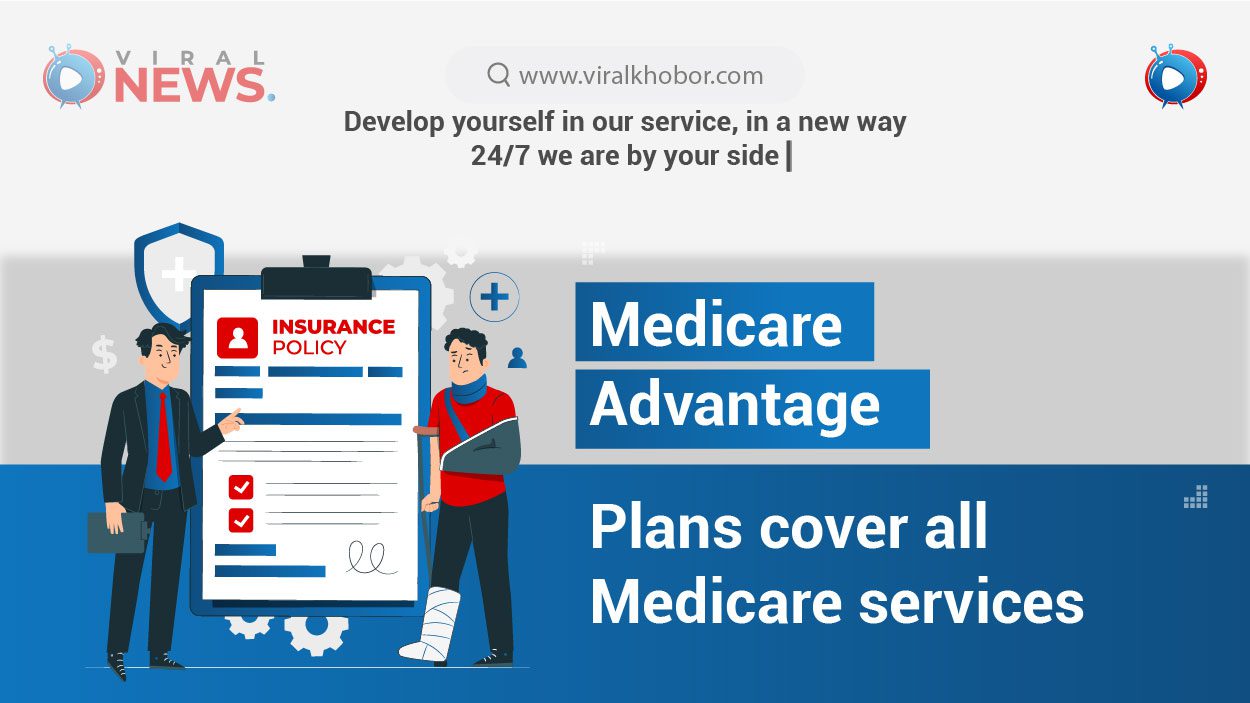As healthcare costs continue to rise and the population ages, finding affordable and comprehensive healthcare coverage becomes increasingly important. One option that many seniors consider is Medicare Advantage plans. These plans, also known as Medicare Part C, offer an alternative to traditional Medicare by providing coverage through private insurance companies. In this comprehensive guide, we’ll delve into the intricacies of Medicare Advantage plans, exploring their benefits, coverage options, enrollment process, and key considerations for choosing the right plan for your needs.
Understanding Medicare Advantage Plans:
Medicare Advantage plans are comprehensive healthcare plans offered by private insurance companies approved by Medicare. They provide all the benefits of Original Medicare (Parts A and B) and often include additional services such as prescription drug coverage (Part D), dental, vision, and hearing benefits, as well as wellness programs. These plans may also have lower out-of-pocket costs compared to Original Medicare, making them an attractive option for many seniors.
Coverage Options:
Medicare Advantage plans come in various forms, including Health Maintenance Organizations (HMOs), Preferred Provider Organizations (PPOs), Private Fee-for-Service (PFFS) plans, Special Needs Plans (SNPs), and Medical Savings Account (MSA) plans. Each type of plan has its own network of doctors, specialists, and hospitals, as well as different rules and costs associated with out-of-network care.
Benefits of Medicare Advantage Plans:
One of the primary benefits of Medicare Advantage plans is their comprehensive coverage. In addition to covering hospital stays (Part A) and medical services (Part B), many plans offer additional benefits such as prescription drug coverage, dental, vision, and hearing care. Some plans also include wellness programs, gym memberships, and telehealth services, helping seniors stay healthy and active.
Enrollment Process:
Enrolling in a Medicare Advantage plan is relatively straightforward. Eligible individuals can sign up during their Initial Enrollment Period (IEP), which typically begins three months before they turn 65 and ends three months after. They can also enroll during the Annual Enrollment Period (AEP), which runs from October 15 to December 7 each year, or during a Special Enrollment Period (SEP) if they qualify due to certain life events, such as moving or losing other coverage.
Key Considerations for Choosing a Plan:
When choosing a Medicare Advantage plan, it’s essential to consider several factors, including coverage options, costs, provider networks, prescription drug coverage, and quality ratings. It’s also important to review the plan’s formulary to ensure that any medications you take are covered. Additionally, consider whether the plan offers extra benefits that meet your needs, such as dental, vision, or hearing care.
Costs and Financial Considerations:
While Medicare Advantage plans often have lower out-of-pocket costs than Original Medicare, it’s essential to understand the various costs associated with these plans. These may include monthly premiums, deductibles, copayments, and coinsurance. Some plans may also have out-of-network costs or restrictions on certain services. Be sure to carefully review the plan’s Summary of Benefits and compare costs before enrolling.
Tips for Maximizing Benefits:
To make the most of your Medicare Advantage plan, consider taking advantage of preventive services, wellness programs, and telehealth services offered by the plan. Be proactive about managing your health, staying up-to-date on screenings and vaccinations, and maintaining a healthy lifestyle. Additionally, review your plan’s coverage and benefits regularly to ensure that it continues to meet your needs.
Common Questions and Concerns:
Many seniors have questions and concerns about Medicare Advantage plans, such as whether they can keep their current doctors, how to switch plans, and what happens if they move or travel. It’s essential to research your options carefully, ask questions, and seek guidance from trusted sources, such as Medicare.gov or a licensed insurance agent, to address any concerns and make informed decisions.
Conclusion:
Medicare Advantage plans offer a comprehensive and affordable alternative to Original Medicare, providing coverage for hospital stays, medical services, prescription drugs, and additional benefits such as dental, vision, and hearing care. By understanding the various types of plans, coverage options, enrollment process, and key considerations, seniors can make informed decisions about their healthcare coverage and enjoy peace of mind knowing they have access to quality care. Whether you’re approaching Medicare eligibility or considering switching plans, take the time to explore your options and find the right Medicare Advantage plan for your needs.
Medicare Advantage plans
Also known as Medicare Part C, are comprehensive healthcare options offered by private insurance companies approved by Medicare. These plans provide an alternative to traditional Medicare by bundling coverage for hospital stays (Part A) and medical services (Part B) into a single plan. In addition to the benefits of Original Medicare, Medicare Advantage plans often include coverage for prescription drugs (Part D), as well as extra benefits such as dental, vision, and hearing care. With their potential for lower out-of-pocket costs and additional perks, Medicare Advantage plans have become a popular choice among seniors seeking comprehensive healthcare coverage.
Medicare Advantage plans, also known as Medicare Part C, offer an alternative way for beneficiaries to receive their Medicare benefits. Here are some key features of Medicare Advantage plans:
- All-in-One Coverage: Medicare Advantage plans typically include coverage for hospital care (Medicare Part A), medical services (Medicare Part B), and often prescription drug coverage (Part D). Some plans may also offer additional benefits like vision, dental, and hearing coverage.
- Private Insurance Option: Unlike Original Medicare, which is administered by the federal government, Medicare Advantage plans are offered by private insurance companies approved by Medicare.
- Managed Care Structure: Most Medicare Advantage plans operate under managed care models such as Health Maintenance Organizations (HMOs) or Preferred Provider Organizations (PPOs). This means beneficiaries may need to use a network of healthcare providers and may require referrals for specialist care, although some plans offer out-of-network coverage with higher costs.
Key Features of Medicare Advantage Plans:
- Premiums and Cost-sharing: While beneficiaries must continue to pay their Medicare Part B premium, many also have additional premiums on top of this. However, some plans may have lower out-of-pocket costs for certain services compared to Original Medicare.
- Out-of-Pocket Maximum: have an annual limit on out-of-pocket costs for covered services. Once this limit is reached, the plan typically covers all additional costs for covered services for the rest of the year.
- Prescription drug coverage: refers to the extent to which health insurance plans or government programs, such as Medicare or Medicaid in the United States, cover the cost of prescription medications. It typically involves a list of covered medications, known as a formulary, and may include various tiers of coverage with different copayment or coinsurance amounts for different types of drugs.
Prescription drug coverage can vary widely depending on the type of insurance plan, the specific medications needed, and the terms of coverage. Some plans may require individuals to pay a deductible before coverage kicks in, while others may have copayments or coinsurance for each prescription filled. In some cases, certain medications may not be covered at all, or may require prior authorization from the insurance provider.
For individuals with chronic conditions or those who require expensive medications, having adequate prescription drug coverage can be essential for managing their health and controlling healthcare costs. In many countries, including the United States, access to affordable prescription medications is a significant issue, and the availability and terms of prescription drug coverage can have a significant impact on individuals’ ability to afford necessary treatments.








